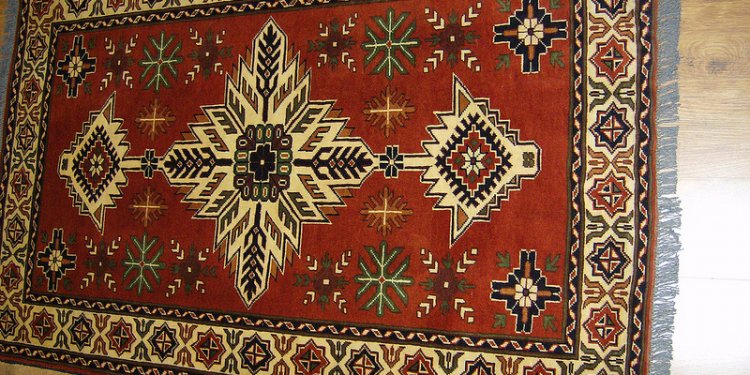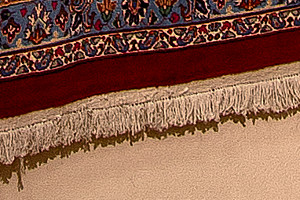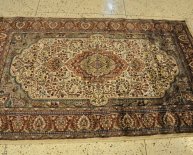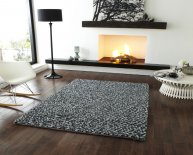
Hand knotted rugs quality
 There are lots of things to consider whenever buying an Oriental carpet, and it’s never a facile task to choose the most useful carpeting obtainable. Whatever carpet you decide on, it's likely you'll get it, and stay with-it, for some time, potentially moving it right down to generations to come. That’s the reason why it is crucial that you feel confident concerning the option. Check out guidelines and directions for judging the standard of any rug.
There are lots of things to consider whenever buying an Oriental carpet, and it’s never a facile task to choose the most useful carpeting obtainable. Whatever carpet you decide on, it's likely you'll get it, and stay with-it, for some time, potentially moving it right down to generations to come. That’s the reason why it is crucial that you feel confident concerning the option. Check out guidelines and directions for judging the standard of any rug.
Can it be machine made or handmade?
Consider the perimeter. If the perimeter is sewn on, the rug might be machine-made. Sporadically, a worn out perimeter will likely to be replaced with a pre-fabricated one, but typically the edge is your first clue that a rug may be bulk manufactured. In addition, the heap, or main material of a rug consists of tufts of yarn which have been individually tied up into the carpeting. These knots is visible regarding the back of carpet as tiny, individual squares. Machine-made rugs absence this kind of definition regarding the straight back associated with carpet.
Also, keep in mind that hand tufted rugs won't be the same as hand knotted. Hand tufted implies that the producer makes use of a "tufting gun" to take a v-shaped little bit of yarn into a plastic grid, creating the pattern inside carpet. Another form of hand tufting requires a weaver pulling the v-shaped little bit of yarn through warp threads, but not tying a knot inside. Though faster for manufacturer, this corner-cutting technique makes a rug that does not have the power and structural integrity of a genuine hand knotted rug. Avoid hand tufted rugs if you should be seeking a permanent piece for your home, as hand tufted rugs can't be repaired.
Wool high quality
Perhaps one of the most important factors into the durability and beauty of a rug may be the top-notch the wool. We have discovered that top carpeting wools on earth result from Iran, which explains why Iranian rugs have always been the absolute most sought after rugs in the field.
Wool quality is determined by the type and food diets of the sheep from which the wool is shorn. Nutrients inside their water-can supply the wool extra strength and luster. Have the carpet, massaging the wool between hands. If it feels powerful, supple, and rich, in the place of dry, harsh, and sharp, then wool is of great high quality. One thing is specifically mindful of is "tabatchi" or lifeless wool. It is wool shorn from sheep which have already been slaughtered. Tabatchi wool is very brittle, and will wear-out really short time. Wipe your hand firmly over an area on top of the carpeting several times. When you yourself have more than handful of loose wool dietary fiber, it is a likely your carpet is made of tabatchi wool. These rugs ought to be prevented if possible, as they will put on to nearly absolutely nothing together with rug will lose all its price within a span of just a couple of many years.
The greatest wool is named "kurk". Kurk originates from the initial shearing of lambs between 9 and 14 months old, and just through the neck and under the hands. Kurk features a feel just like velvet, but is extremely powerful.
Knot count
Many dealers sell knot count as just measure of high quality. Whilst it’s correct that an increased knot matter implies that the rug took much longer to produce, there are some other considerations. Knot matters in rugs can vary from as little as 40 per square inches to up to 1200. Think of knots as pixels on a screen. The finer the knot count, the bigger the quality associated with image. For that reason, higher knot matters work best for rugs with a great amount of information. Curvilinear styles need greater knot counts. Geometric designs can frequently do with less counts whilst still being be high quality pieces.
In Iran, most knot matters tend to be calculated in "raj". One raj is the range warp threads in 7 centimeters. A 30 raj carpet is generally considered "commercial" class, with approximately 120 and 140 knots per square inches. Rugs of 50 raj and greater are believed good carpets. A 50 raj carpet generally has actually about 330 knots per square inches. An 80 raj carpet, like our Serafian carpet, features about 900 knots per inches, and is a truly exemplary piece.
A typical weaver can link between 4, 000 and 8, 000 knots per day. Which means a 9' X 12' carpet woven at 350 knots per inches (as in numerous good Bijar rugs) may take over 2 yrs for example weaver to make.
Pile
Density about knot matter and impacts the longevity of a carpeting. The tighter and denser the pile is, the greater the carpet will resist use. Take your fingers and attempt to wiggle all of them to the pile. Can it be tough to work them all how you can the bottom of the stack? In that case, the carpet is thick and very likely to wear well.

















